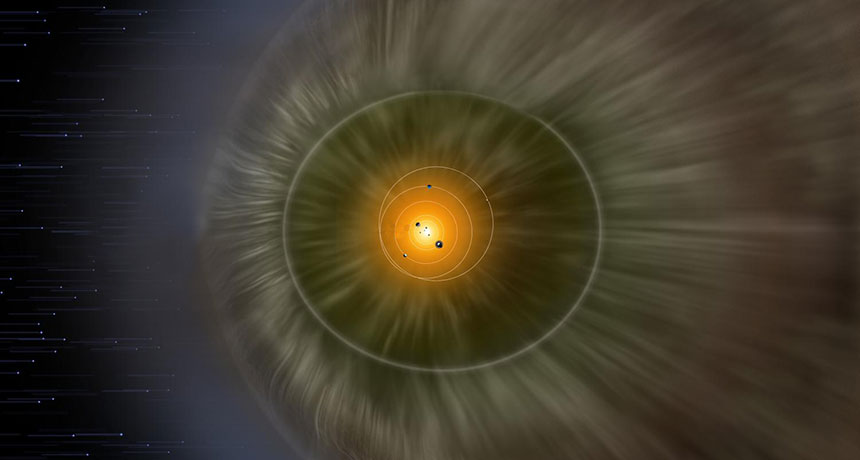The New Horizons Spacecraft may face a Hydrogen Wall at the End of our Solar System

New Horizons is getting constantly far away from the Sun but soon it may face a ‘wall’. Already exceeding Pluto, the spacecraft is currently at a distance over four billion miles from our planet. It apparently measured how far the sun can influence the solar system by coming across a wall of hydrogen.
What does it mean?
It isn’t the first spacecraft that encountered it because over 30 years ago Voyager stumbled upon very similar measurements. With this latest encounter, New Horizons will provide more information about how far can the sun’s reach influence things.
What do scientists have to say about this?
Randy Gladstone, a researcher from the Southwest Research Institute feels that there must be an extra source of light somewhere that might explain that hydrogen wall. He bets that if New Horizons can get further we might find out exactly what happens.
What is the scientific explanation?
When the sun is shining, its light is able of projecting charged particles to the outskirts of our solar system. Because of these particles, the hydrogen which can be found between planets releases specific ultraviolet light. However, when the distance increases, the sun’s light loses power. That’s when a hydrogen boundary happens, piling up at the edge of our solar system, carried by the solar winds.
That’s why we sent spacecraft
At first, there was Voyager and its measurements seem to explain what New Horizons found. Even after three decades, the data is still almost the same. Apparently, that extra brightness we mentioned previously could be from the hydrogen particles beyond our solar system. We aren’t sure if that’s for sure the cause, although the fact corroboration from the two space probes is at least a clue.
0 comments